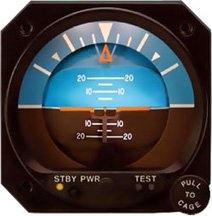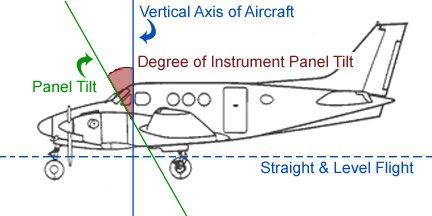| Part #: | 102-0054-03 |
|---|---|
| Model: | RCA26BK-12 |
| Desc: | Electric Attitude Indicator |
| OEM: | Kelly Mfg. |
| NSN: | |
|---|---|
| Sched-B: | 9014107040 |
| ECCN: | 7A994 |
 Select part number above to view pricing and availability.
Select part number above to view pricing and availability.
| Price | Condition | Availability | Stock Info | |
|---|---|---|---|---|
| Price | Cond. | Avail. | Stock Info | |
| $2,550.00 | NEW OUTRIGHT | REQUEST LEAD TIME |
|
|
| $2,295.00 | OH OUTRIGHT | REQUEST LEAD TIME |
|
|
| $1,595.00 | OH EXCHANGE | REQUEST LEAD TIME |
|

FEATURES
- 3-inch 28V Electric Attitude Gyro Indicator
- Lighted, Movable pointer, fixed roll dial
- Blue/brown display, black roll dial, white pointer and airplane
- Non-tumbling-can roll and loop continuously without spilling
- AC brushless motor
- Power failure flag
- Blue-brown display
- Lightweight
- Internal 3 phase inverter produces high starting torque and increased gyro rotor speed
- Reduced roll bearing loads
- Gimbal caging
- Connector pinout: A: Ground Motor, B: Ground Lights, C: +28VDC Motor, D: 28VDC Lights
| Bank Range: | 360 deg. (unlimited) | Pitch Range: | +-85 deg. min. |
| Pitch Trim Range: | +-7 deg. min. | Altitude: | -1000 to +40000 ft. |
| Accuracy: | (settling error) 1 deg. max. in roll and pitch after +-7.5 deg. of scorsby motion for 30 minutes | Accuracy: | (verticality error) 1 deg. max. |
| Power Consumption: | 17VA max. lighting 3VA max. | Run-up Time: | 3 minutes max. after application of power |
| Weight: | 2.7 lbs. | TSO: | C4c and AS396 |
| Part Number | Attitude Indicator Description: |
|---|---|
| 102-0054-03 | Details as above, 5 degree tilt |
| 102-0054-04 | Details as above, 0 degree tilt |
| Price | Condition | Status |
|---|---|---|
| $2,550.00 | NEW OUTRIGHT | REQUEST LEAD TIME |
| $2,295.00 | OH OUTRIGHT | REQUEST LEAD TIME |
| $1,595.00 | OH EXCHANGE | REQUEST LEAD TIME |
Click on a question below to see the answer. If you have a question about this model that is not answered below, please contact questions@seaerospace.com
Why do some parts indicate "REQUEST" or “RFQ” on the Southeast Aerospace website?
In relation to NE (New) parts, many OEMs change their prices and availability without any notice to dealers or the industry. Therefore, through the REQUEST or RFQ indication, we ask that customers contact us for the most accurate price and availability.
In relation to SV & OH parts, the used parts aftermarket in the aviation industry is not an infinite supply. It is a dynamic, constantly changing market that is significantly affected by and susceptible to highs and lows in supply and demand. Therefore, although we attempt to, at times, we are unable to predict the exact moment when an item may be available. Once again, through the REQUEST or RFQ indication on our website, we ask that customers contact us for the most current and accurate price and availability.
What information is needed before I order an attitude gyro indicator?

|
Note: There is an extra charge to reset the tilt angle after purchase. |
What is panel tilt?

|

|
Should all cage-able attitude indicators be locked when handed, transported, or stored?
Many legacy electromechnical attitude gyroscopic instruments include a caging device to hold the gimbals in place and 'force' the gyro gimbals to return to their home position. This instantly erects or resets the unit by pulling the caging knob. Some caged gyros include a cage lock mechanism, some do not. Some people believe that a cage-able gyro should always be in the locked position when handling, transportation, or storage takes place. This is not always the case.
For example, L3, manufacturers of the legacy AIM gyro product line, specifically indicate in their installation manuals and service letters that "instruments without cage locking mechanisms are designed to be shipped in an uncaged condition...using external locking devices to cage the indicator may result in damaging the caging system...". Southeast Aerospace has seen many people use external means to force a cage lock such as a spacer wedged between the extended shaft and knob. As indicated by L3 (AIM), this could very well damage the unit since you are forcing it to do something it might not have been made to do.
Most, if not all, gyro manufactures have detailed instructions within their installation and operation manuals that indicate how a specific model instrument should be handled, transported, and stored. This includes instructions on whether or not to cage lock the instrument or not. Always follow the manufacturer's instructions.
(Cage-able but does not have cage lock locking mechanism)

(Cage-able but has cage lock)


